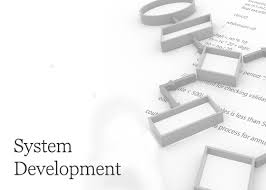A sight of depression strikes every single individual when they receive every month’s salary. The amount mentioned by the company or offer letter will have no relation with the amount received as salary. Most of them will be ignorant about the deductions happening in companies and for that reason any individual will be interested to increase the take home amount.
In this article I will try my best to deliver some ways through which an individual can increase your take home amount. Exemptions for tax are classified into 4 categories in India. The first category is “Exceptions under section 10 & 17”. This category holds a House rent allowance (HRA) exception under which your rent amount paid for your home is exempted for tax. So, as a proof submit your receipt for rent payment. HRA will be allocated to every individual as either 40% or 50% of basic salary and dearness allowance. 50% is preferred when the job is in metro cities and 40 % for non-metros.
So, its either (Basic pay + dearness allowance) * 40%
Or (basic pay + dearness allowance) * 40%
Though the entire HRA cannot be deducted from tax, your rent amount can be claimed. The happy news here is an individual can claim tax benefits even if he/she pays rent for their parents.
Second component under section 10 & 17 is transport exemption, which can be claimed Rs.800 per month (i.e) Rs.9600 per year for transport to office from your residence. The next component is children education allowance through which an individual can gain tax benefit for maximum 2 children’s education and hostel allowances. Though it seems to be a favorable one, maximum of Rs.400 per month only can be considered per child.
Followed by these components comes Leave Travel Allowance (LTA). Under this component company can deduct your travel expenses incurred by you. This travel expense is all about the trips that an employee plans. But the negative side of this benefit is an individual can apply only twice in a period of 4 years.
Under second category, interest amount that an individual pays for house loan will be deducted for tax. Also if an individual receives any interest from banks can be considered for deduction.
Third category is deductions under chapter VI-A under which medical insurance will be considered for tax deduction. Medical insurance for self, parents, handicapped dependents will be considered if proper proof is submitted to the respective officials. Medical insurance’s limit for tax exemption has been increased to Rs.25000 for an individual from Rs.15000, Rs.30000 from Rs.20000 for senior citizens and Rs.55000 from Rs.35000 for vey senior citizens. Any interest payment for educational loan will be taken into consideration under this category. Also, if an individual donates to any charity it can be exempted for tax under the specified limit.
Deductions under section VI (80 C), can be availed to a maximum limit of Rs.1,50,000 per year. Housing loan principle repayment will be considered under this category. National pension scheme, provident fund and voluntary provident fund will be deducted under this category. Employee Provident fund will be deducted as 12% from basic salary and equal contribution will be added to your PF account by your employer. Employee can also choose to pick voluntary provident fund which is also exempted from tax. Budget 2015- 2016 has decided to allow employees to choose between Employee provident fund and National pension scheme. Sukanya Samriddhi Yojna has been made complete tax free from this budget. This is especially for your girl child, a parent is allowed to deposit maximum of Rs.1.5L per year for a child and tax exemption is given for 2 girl child. The amount can be partially withdrawn after 18 years and fully withdraw after 21 years. Indians has given a encouraging welcome for this scheme. This scheme would help banks to see good profits. “ Soch kar , samach kar , save kar”.
Click here for government certification in Accounting, Banking & Finance





19 Comments. Leave new
You’ve explained everything really well. Good work. 🙂
Very informative.
Such a unique article and I would love to apply it in my near future 😉
Excellent article…!
Very well explained..
Good article. Very meticulously explained. It shows you know the topic very well.
nice article
Well explained! Good job 🙂
Well written!
Well explained . I would like apply in my future.
very nice topic, easy language & well explained.
Nice explanation
Well explained!
Well researched
Explanatory☺
Well written
Interesting read.
good work
Very well written